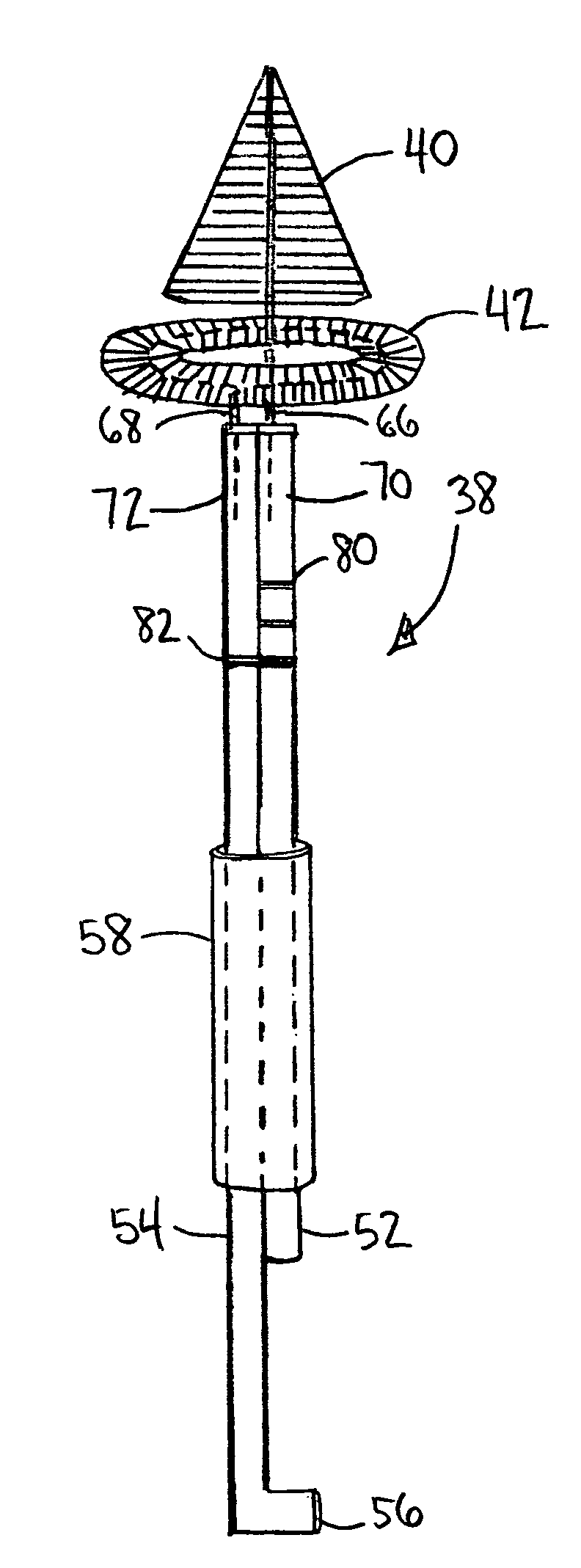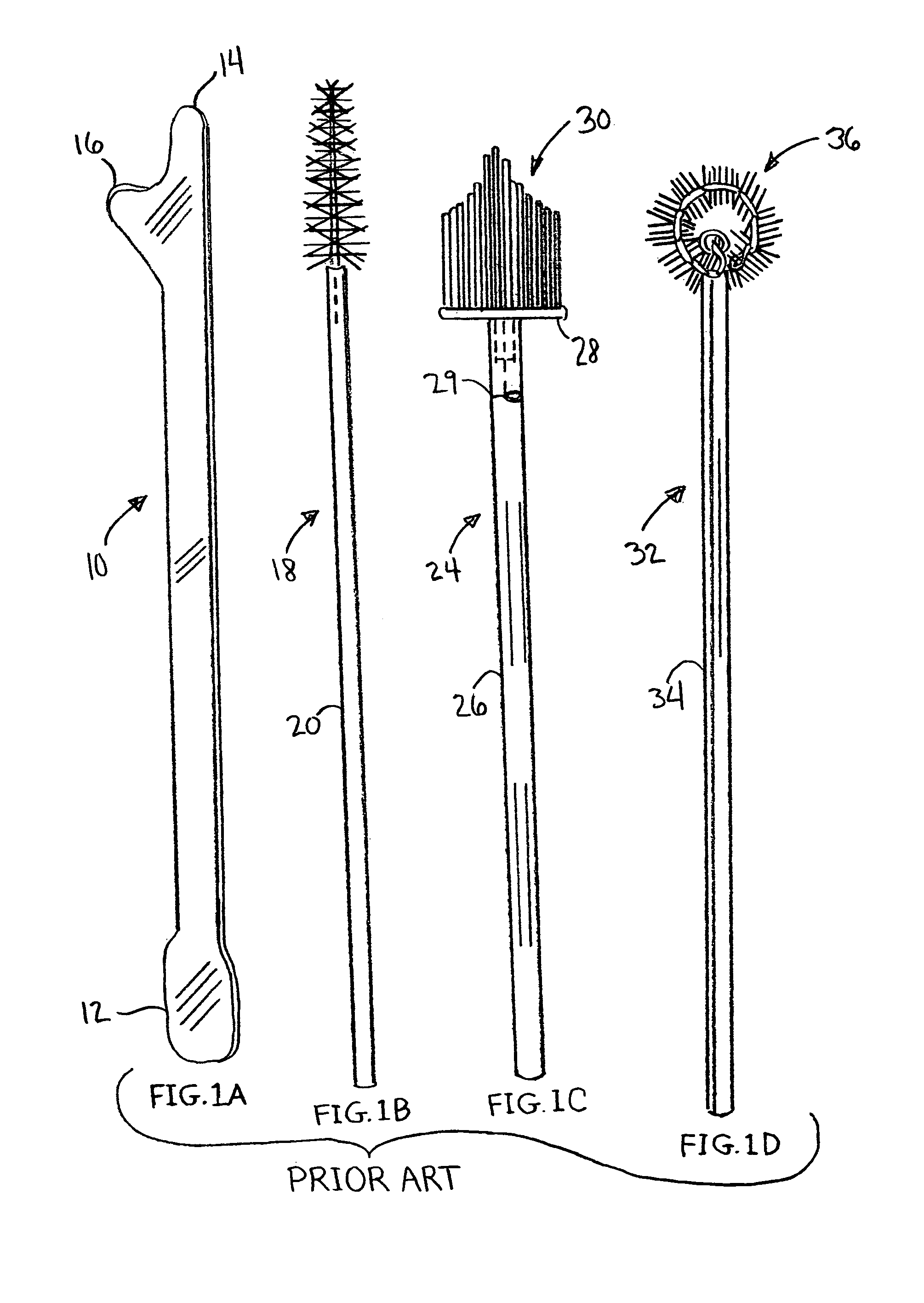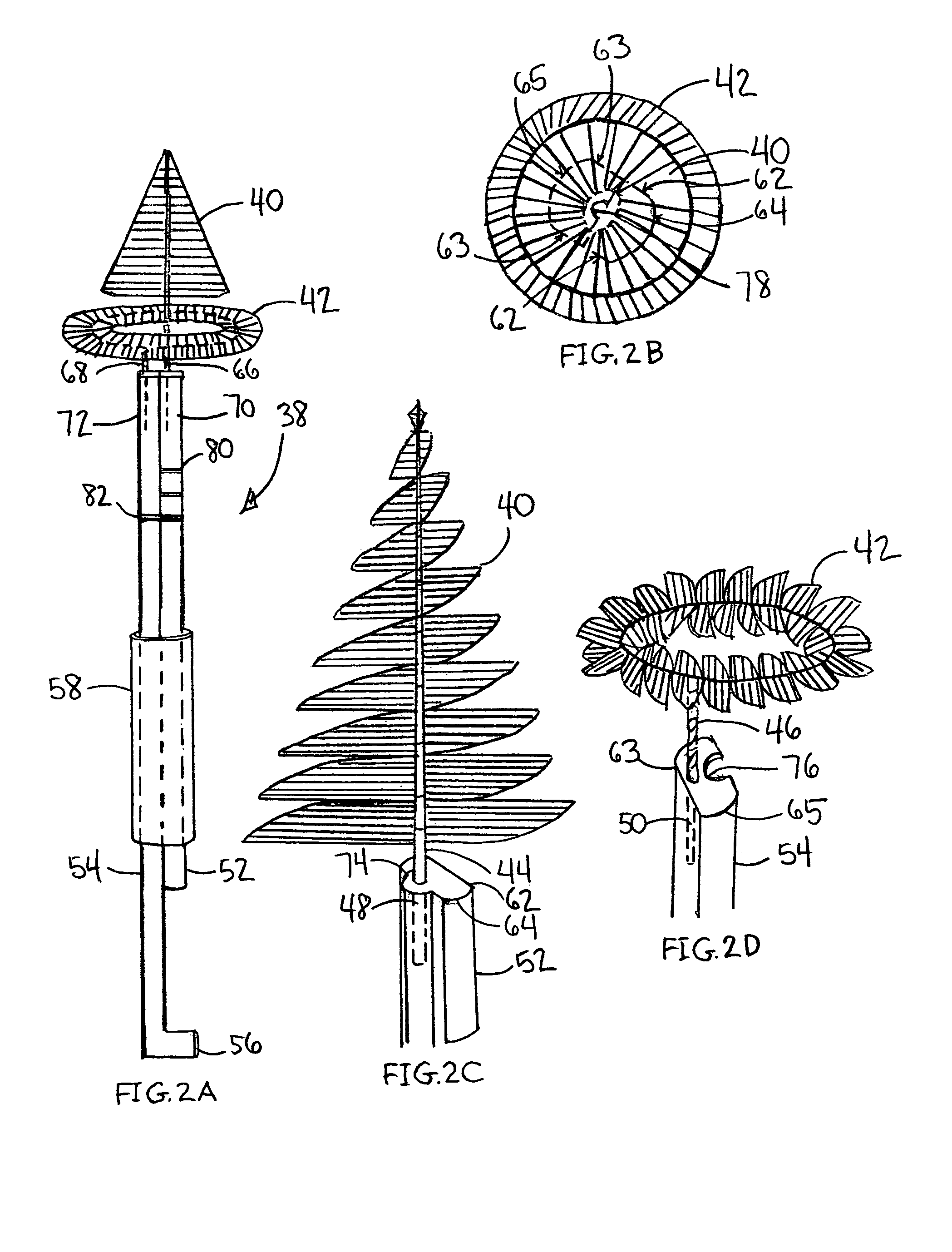They, however, cannot be adjusted in depth to allow for a patient's endocervical length or clinical history such as:
stenosis occurring in
postmenopausal women,
pregnancy, prior cervical therapy, or prior inadequate endocervical sampling.
Currently no brush devices contain means for identifying depth of endocervical sampling by displaying incremental markings or measurements.
In a significant number of instances, when the specimens are not adequate because of lack of endocervical cells, the
cell sample is less than optimal, and the patient is called for a re-examination.
In pregnant patients, the location of the transformation zone may descend, but practitioners may be reluctant to sample deeply enough, or may choose to abandon the endocervical brush altogether.
Although certain manufacturers have indicated endocervical brushes are not recommended in pregnant women (post 10-weeks) due to possible clinical complications, other studies have considered this concern to be unfounded.
Although the endocervical brush produces more adequate
Pap smears in
pregnancy, there is currently no way to adjust for the depth of sampling in pregnant patients.
Another
disadvantage to the endocervical brush is the lack of a stop or guide preventing the brush from entering too deeply into the endocervical canal.
Another
disadvantage of the endocervical brush is that a large portion of the
cell sample is lodged within the bristles of the brush, making it difficult to transfer all of the cells to the slide merely by wiping the bristles against the slide's
smooth surface.
Valuable diagnostic material is potentially lost, increasing the risk of a false-negative diagnosis.
However, the rinsing action within the solution is often insufficient to dislodge or flush out all the cells that are contained on the bristles.
Another
disadvantage is that cervical mucous tends to quickly air-dry unless immediately rinsed in the fixative solution, thickening and binding the cells to the bristles.
Rinsing, or using a manual vortex action within the solution alone may not be adequate to release the cells from the bristles.
This has a drawback in that a loss and disruption of
cellular material by human manipulation occurs when attempting to remove the brush from the shaft.
Several studies have indicated that a
broom-like device with thicker collection bristles have a tendency to provide less than optimal sampling of the endocervix.
Each individual
bristle has a flat and rounded side, and a counterclockwise rotation brings the rounded side in contact with the
cervix instead of the flat side, reducing the device's effectiveness of collection.
While agreement has been reached for sampling the transformation zone, differences in the estimated proximity of the transformation zone and the face of the outer cervix has led to doubt the effectiveness of sampling the endocervix and outer cervix with a
broom-like device.
It has been reported that
broom-like devices appear to under-sample the endocervix, resulting in increased less than optimal Pap smear results based on lack of endocervical component.
Another disadvantage of cervical broom-like devices is that although the bristles may be flexible, the clinician cannot manually adjust for different depth sampling of the endocervical canal.
A further disadvantage is that currently no broom-like devices contain means for identifying depth of endocervical sampling by displaying incremental markings or measurements.
Another disadvantage is that the base of the broom-like device is arranged in a
linear configuration, requiring additional rotations of the device to sample the entire outer cervix area.
Additional rotations of
cytology collection devices cause unnecessary abrasion of the cervix surface, adding to patient discomfort and bleeding.
A further disadvantage is that studies have indicated that excessive red blood cells introduced to the container of fixative solution may clog the filters of certain liquid-based
cytology methods, blocking the epithelial cells from being deposited onto the
glass slide.
Another disadvantage of the broom-like device occurs if a
glass slide must be prepared instead of using a liquid-based cytology method.
This may be costly and prohibitive in parts of the world that are isolated, poor, or lack the benefit of technological advancements.
If the clinician attempts to flatten and bend the plastic bristles onto the
glass slide to release material, the endocervical components will be inadvertently mixed with the cervical components.
Although the present cell collection brushes and broom-like devices are well-known and widely used, there continues to be many disadvantages associated with them.
Other prior art sampling tools include an apparatus and method for obtaining a transepithelial specimen of a
body surface using a non-lacerating technique, but the stiffness of its brush bristles lends itself for
tissue sampling and is not appropriate for cytology.
 Login to View More
Login to View More  Login to View More
Login to View More 


